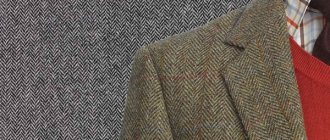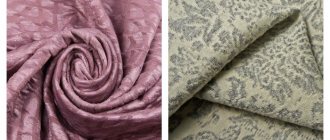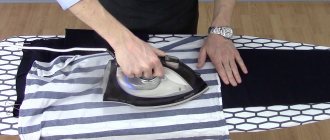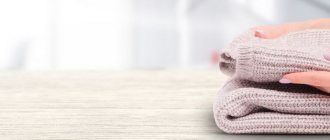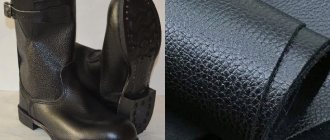Oxford fabric: scope - now and before
Dense twill fabric with a checkerboard thread pattern began to be produced in the 19th century in Scotland. Oxford students appreciated the quality of the material and began ordering shirts from it. Today, a shirt made of this fabric is a symbol of studying at a prestigious university and an integral part of the dress code of high-status organizations.
In the 19th century, Oxford material was made from cotton and used for clothing. Now these are predominantly synthetic fabrics, and the range of their applications has expanded significantly.
Today they sew from Oxford:
- jackets and windbreakers;
- bags and backpacks;
- tourist equipment and shoes;
- special clothing for hunting and fishing;
- awnings, tents, sun loungers;
- protective suits, overalls and aprons.
What is oxford fabric
Oxford is a material with a characteristic weave of fibers, due to which a checkerboard or basket-like pattern appears on the surface. Its severity depends on the density of the tissue. People call this texture matting.
Oxford is a dense, opaque material. It is rough to the touch, thin synthetic variations of the fabric are quite slippery.
The material is very durable. The tensile strength, depending on the composition and density, is from 80 to 160 KGS for the warp and from 40 to 125 KGS for the weft. While most other materials on average can withstand a tensile strength of 50 KGS per 30 KGS, respectively.
Oxford is not elastic. The twill weave does not allow it to stretch in either direction. The material holds color well and does not fade. Products made from it do not wear out over time. Despite the inability to expressly stretch, the fabric is flexible, does not break, and does not wrinkle when compressed.
According to the official version, the fabric was invented in Scotland at the end of the 19th century. She was named after a city in Great Britain. The linen was made from cotton and used for sewing men's clothing.
Oxford gained popularity thanks to men's T-shirts with a characteristic collar and buttons at the throat. At first they were made for polo players. Later, polo shirts became popular among Oxford students, as well as students of famous American universities. Now in the United States, clothing of a similar cut has become an integral part of the dress code in many companies.
In Rus', the type of weaving that is used to create Oxford shoes has been known since ancient times and is called “matting.” This technology was used to make coarse fabric for household needs.
Oxford fabric is woven using the twill principle. The difference is that the weft and warp threads are intertwined not individually, but in groups. Thanks to this, a “Panamanian” relief appears on both sides of the material in the form of squares arranged in a checkerboard pattern.
There are natural, synthetic and semi-synthetic Oxford:
- Natural fabric is made from cotton. This is the oldest variety. This material is inferior to synthetic analogues in terms of strength and moisture resistance, but is distinguished by good breathability and comfort to wear. Men's and women's shirts are sewn from it.
- Later, synthetic fibers began to be added to oxford. It has become more durable and has moisture-repellent properties. This variety is still quite soft and pleasant to the touch. Suitable for sewing T-shirts, shirts, sportswear.
- The most modern type of Oxford contains only synthetic fibers. The fabric is intertwined with nylon and polyamide fibers. The material has a protective synthetic impregnation. This material is quite rough, but very durable and frost-resistant. This is a water-repellent fabric that practically does not allow air to pass through. It is the synthetic version that is most popular.
The price of an Oxford depends on the brand. The most popular option, marked 600d, costs an average of 300 rubles. for 1 m.
Types of fabric
There are several varieties of Oxford. First of all, they are classified according to the type of synthetic fibers contained in its composition:
- Nylon. Made from nylon fibers. The result is an elastic, durable and dense fabric that is resistant to chemicals. The disadvantage of this variety is low resistance to elevated temperatures and ultraviolet radiation, and the ability to attract static electricity.
- Polyester. Polyoxford is less durable and flexible. Its main advantages are resistance to ultraviolet radiation and high temperatures.
Modern fabric has synthetic impregnation. The inner part of the fabric is impregnated with polyurethane, and the outer part with polyvinyl chloride (PVC). The coating provides protection from moisture, wind, cold and other adverse environmental factors.
The level of protection depends on the thickness of the impregnation layer. Materials are marked according to this indicator. The marking indicates the height of the water column that the protective part can withstand:
- 200–300 mm. This is minimal protection. It has low moisture-repellent properties. A jacket made of such fabric will get wet in the rain within 20–30 minutes.
- 300–500 mm. Increased protection with pronounced water-repellent properties. It will take an hour for a downpour to wet the fabric on the folds.
- 500–1000 mm. This is a waterproof fabric with high water-repellent and windproof properties.
- 1000–3000 m. Highest level of protection. The fabric for sewing shades has this impregnation.
Another parameter by which oxford is classified is the quality of the fiber. There are two types:
- Royal Oxford. The fabric is woven from thin, high-quality fibers. The result is a dense but thin material with a slightly pronounced relief. Used for sewing expensive polo shirts.
- Pinpoint. It is made from coarser and thicker fibers, which are woven in bundles of 6 or more pieces. The fabric has a more pronounced relief and high density. It is used for sewing budget T-shirts and trousers, outerwear, workwear, bags, and hats.
An important characteristic that you need to pay attention to when choosing is density. Each density level has its own marking, which is measured in Den:
| Density | Main characteristics |
| 150d–200d | The lightest and thinnest type of material. Used for sewing the top layer of jackets, raincoats, shoe covers, trousers |
| 210d–240d | More dense, but still thin fabric. It is used for sewing demi-season jackets, sports bags and backpacks, tourist and hunting clothing, as well as making uniforms for law enforcement agencies |
| 300d–420d | Very dense, tough material. Used for making shoes, suitcases, belts, workwear for being in extreme conditions |
| 600d | Fabric marked Oxford 600d - dense, tent-like, tarpaulin-like |
| 1680d–1800d | The most durable, rigid fabric. Made to order only |
The most popular are plain colors and camouflage. Colors can be different, from beige and black to red and orange. It is possible to print various prints on Oxford fabric.
Watch a video about fabric testing:
Characteristics of Oxford material
The composition of Oxford fabric is primarily nylon and polyester. Nylon is a durable and elastic material, which at the same time allows wind to pass through and rustles in the cold. Polyester is less durable, but can withstand higher temperatures, is resistant to chemicals and does not fade in the sun. Depending on the scope of application, the appropriate fabric composition is selected.
Ask a Question
| Properties of Oxford fabric | |
| advantages | flaws |
| Durable material: does not tear, does not wear out when bending. | Impregnation of the fabric makes it water- and airtight. Such clothes are not worn for a long time - you can sweat in them. |
| Lightweight material with a pleasant smooth surface, holds its shape well, and drapes beautifully. | The fabric rustles. In the cold, the sound becomes even louder, so hunters do not wear winter suits made of this material, otherwise they can scare away the animal. |
| Waterproof and stain-resistant fabric. | If the fabric contains nylon, it becomes flammable - one spark will create a hole in the awning or tent. |
| Resistant to low and high temperatures from -50 to +110 C | Clothing and camping equipment made from polyester are more resistant to high temperatures, but they are less durable than nylon. |
| Not affected by chemical and organic solvents. | |
| The bright color remains after numerous washes and does not fade in the sun. | |
| Easy to care for and easy to wash. | |
| Affordable price. | |
Types and areas of use
Based on the material, Oxford fabric is classified into two types:
- Nylon. The basis is nylon fibers. This fabric has high strength, elasticity, resistance to various damage, abrasion, and chemicals. But it can accumulate static electricity and does not cope well with high temperatures and light.
- Polyester. Consists of polyester fibers. The material is less durable, but has excellent light and heat resistance, and is also not susceptible to chemicals.
Nylon type
Note! The scope of use is directly related to the thickness of the thread used.
Boots
The fabric is used to make:
- clothes;
- shoes, bags and backpacks;
- tourist tents and awnings;
- workwear;
- covers for various vehicles;
- special forces clothing.
Oxford bag
Decoding the symbols on the fabric
The density of Oxford fabric is indicated by the letter D and a number. Indicators vary from 150 D to 1800 D. The fabric becomes dense due to an increase in the thickness of the fibers, and impregnation with polyurethane and polyvinyl chloride provides protection from moisture, wind and chemical reagents, in addition, it makes the material one and a half to three times stronger.
Ask a Question
When choosing fabric for a specific product, it is worth understanding the fabric markings:
| Marking | Characteristics of Oxford fabric | Scope of application for sewing from Oxford material |
| 150D | The thin fabric drapes well, holds its shape, and is treated with moisture-proof impregnation. | Raincoats, jackets and raincoats. |
| 210D | Quite thick fabric. | Tourist equipment, suits for fishermen and hunters, uniforms for internal affairs officers, life jackets, raincoats and hats. |
| 240D PU | Heavy-duty polyester fabric with polyurethane impregnation - protected from moisture and sunlight. | Tents, camping equipment, equipment for fishermen and hunters. |
| 300D PVC PU | The material is impregnated with polyvinyl chloride and polyurethane. | Shoes, bags, backpacks, travel gear and equipment for fishermen and hunters. |
| 420D PVC PU | Quite durable material. Impregnated with polyurethane and polyvinyl chloride. | Uniforms for employees of law enforcement and departmental organizations, equipment for tourists, fishermen and hunters. |
| 600D PVC PU | The waterproof material is impregnated with polyvinyl chloride and polyurethane. | Trade stalls, awnings, marquees, garden and tourist folding furniture, shoes and suitcases. |
| 1500D | Tough and ultra-durable fabric. | Car awnings, covers for vehicles. |
| 1800D | The most dense and heavy oxford is purchased to order. | Heavy duty awnings. |
What is sewn from this fabric?
The fabric is used to make many things: various types of clothing, shoes, haberdashery, equipment for fishing, tourism, hunting and recreation, covers for vehicles, advertising banners, posters, furniture production, etc. The use of this material is widespread, it used in all areas of light industry, because the fabric density varies from 150D to 1800D. The fabrics can be thin and very dense, hold their shape well and fold comfortably, and drape well.
You may be interested in 100% polyester fabric: synthetic material or not
Tent
Note! The color range of Oxford fabric is directly related to the items made from it.
Since the scope of application has a rather narrow focus, this material cannot boast of a wide variety of colors. Classic version: black, gray, blue, green and khaki colors. Prints with white-green and white-blue stripes of various shades are widespread. Less common are tones such as white, yellow, orange and red. Fabrics with camouflage print and luminescent coating are specially produced, sometimes in neon colors. The fabric can also be dyed using a special paint.
Briefly and to the point: what is good about Oxford?
Modern workwear, be it a waiter's apron or a delivery service employee's windbreaker, should look attractive, bright and aesthetically pleasing. But this is not enough! The employee should feel comfortable in it. In Oxford clothes, he is not afraid of wind, moisture and dust. Such uniforms serve for a long time and are pleasing to the eyes of staff and management, and customers like them.
Do you want to order a functional Oxford uniform? Leave a request on the website and we will contact you to discuss the details of the order.
Ask a Question
Main advantages and disadvantages
Oxford fabric is widely used due to a large number of properties that cannot be found in the description of other popular fabrics.
Among these advantages are:
- big choice;
- high strength, which leads to the absence of tears and bends in the material;
- excellent water resistance, ability to repel dust;
- has good heat resistance. The fabric retains its qualities at temperatures from -50 °C to +110 °C;
- withstands exposure to sunlight;
- no special care is needed, the material is easy to wash and does not lose color;
- You can buy a piece of fabric quite cheaply (from 160 to 37 thousand rubles per 1 m)*.
You might be interested in Description of recycled leather with companion
Waterproof properties
However, such a wonderful fabric has its drawbacks:
- poor air exchange. Due to the synthetic composition, items made from this fabric are not suitable for long-term wear and physical activity;
- small selection of colors;
- rustling of the material.
Important! The disadvantages of fabric depend on the source material and the coating used. For example, a fabric made from polyester will not be dense and flexible enough compared to nylon. In turn, unlike the first, the latter is easily burned through by sparks.
Despite the possible disadvantages, do not forget that Oxford fabric has a pleasant and beautiful structure, is long-lasting and wear-resistant. It is very important to choose the right type of fabric for your purposes and carefully study its characteristics.
Video: comparison of fabrics of different densities
In this video you will see close-up samples of fabric of different densities, as well as types of impregnation.
See similar articles
- Tapestry - thick fabric with patterns for the interior
- Denim is a versatile, thick cotton denim fabric
- Crepe de Chine - flowing fabric for elegant clothing
- Ribana - knitted fabric, natural and tight
- Polyester is a synthetic fabric with unique properties
- Tweed - fabric made from natural wool for suits
If you liked the article, share it with your friends!
Customer Reviews
Owners of Oxford products note the practicality and long service life of the products, excellent water-repellent properties, and ease of care. It is called irreplaceable by tourists, mothers of restless children who strive to get into the mud, fishermen, and hunters. However, they note that if the sewing technique is incorrect or the needle is too thick, the product may get wet at the seams. The disadvantages include severe sunburn.
Oxford has positively proven itself in all areas of application due to its high quality characteristics. A huge number of Oxford products surround a person and are used daily. All of them are practical, durable and indispensable in use.
Tarpaulin. Fabric structure.
In the textile industry, one of the most durable and dense fabrics is tarpaulin. The canvas has become widespread in various sectors of human activity due to its unique characteristics. The material is resistant to many external factors - moisture, elevated temperatures, fire, ultraviolet radiation.
In modern tarpaulin production, three types of fabric are used - jute, cotton or linen.
Depending on the production method, there are two types of fabric:
- semi-linen tarpaulin - this type of material is made from flax and cotton fibers in different proportions: 49% to 51%, or 35% to 65%. The result is a durable, soft and flexible tarpaulin;
- jute tarpaulin. The raw materials are jute and cotton in equal proportions. This fabric is highly dense and heavy.
Both types of fabric are made using the method of tightly weaving fibers that are tightly twisted together. The production process and composition of tarpaulins are regulated by GOST 15530-93.
Tarpaulin fabric has the following technical characteristics:
- high tensile strength;
- wear resistance – the fibers are resistant to abrasion, tearing, and punctures;
- breathability;
- has dirt-repellent properties;
- low hygroscopicity coefficient;
- material density from 300 to 900 g per square meter. m.
To give the material additional protection from external factors, its surface is treated with special compounds. As a result, the tarpaulin can be endowed with the following qualities: fire resistance, water resistance, bio-resistance.
Because of the listed qualities, tarpaulin is widely used in many areas of work. The material is used to make bags, backpacks, sacks, awnings, tents, mittens, and workwear. In modern stores with sewing products, as a rule, there is a wide variety of materials, where it will not be difficult to buy tarpaulin fabric.



